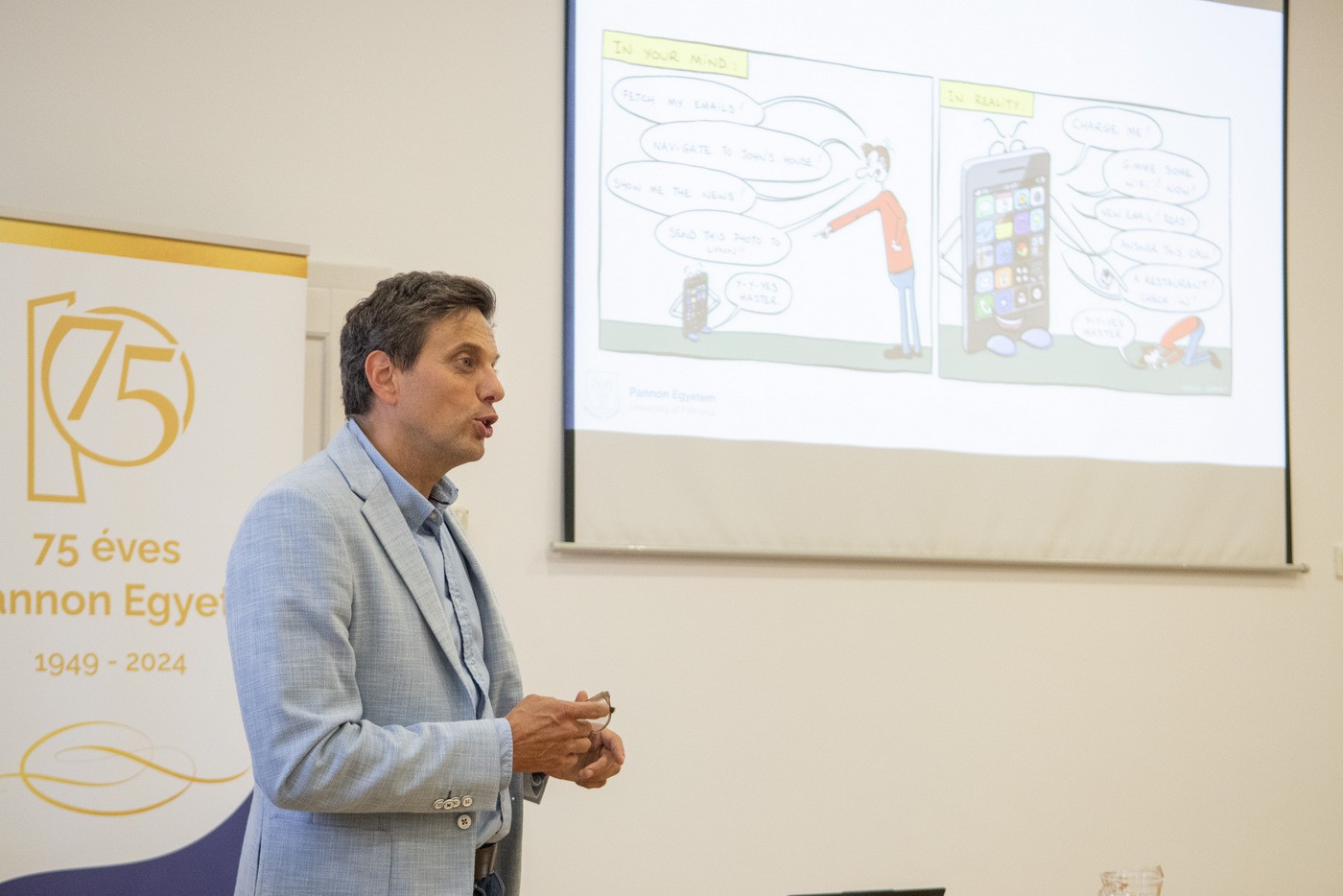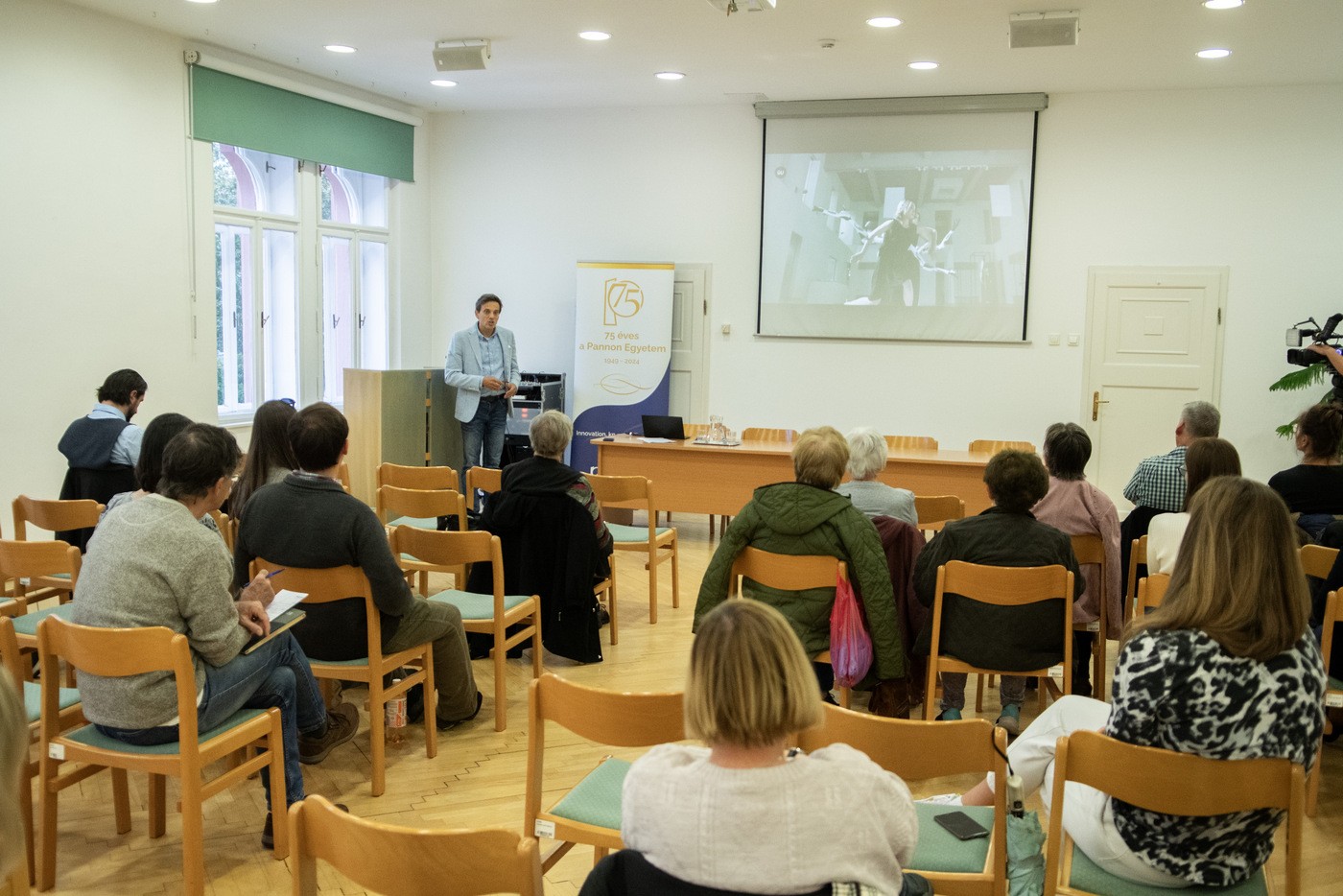Hallgatói portál
- fas fa-search
- Accessibility
Hallgatói portál
Co-evolution, singularity, transhumanism… These are just a few terms that have broken out of the walls of scientific discussions and are increasingly appearing in public discourse when the topic shifts to the rise of artificial intelligence (AI). As part of the "Living Library" lecture series, Dr. János Abonyi, the rector of the University of Pannonia, helped guide the audience through this world. One of the key messages of his lecture was that while we don't need to fear AI, we must keep a close watch on how it develops. (Source: vehir.hu)
It's not wise to adopt an ostrich-like approach and ignore the growing influence of AI in everyday life. The so-called co-evolution is happening around us, affecting our lives whether we want it to or not.
But what exactly is co-evolution? Dr. János Abonyi discussed this on Thursday at the county library as part of the "Living Library" lecture series, a joint initiative of the library and the 75-year-old University of Pannonia, aimed at engaging the public in scientific topics in an accessible way.
Returning to Abonyi's lecture and the concept of co-evolution, it suggests that two species evolve by influencing and adapting to each other. In this case, it refers to humanity and technology, with the latter represented by AI. This mutual influence is something that all members of modern society will inevitably experience. Abonyi also mentioned that it is telling that this year’s Nobel Prize in Physics was awarded for achievements in AI research. AI-related research began not just a few years ago, but as far back as the 1960s. However, it is only recently that AI has started to rapidly advance and enter everyday life.

The rector categorized different types of AI, making it easier to understand why these technologies are already intertwined with our lives. We can distinguish between weak, strong, and superintelligent AIs.
Weak AIs are designed to perform specific tasks, such as the map function on smartphones. The second category includes programs capable of solving multiple tasks at once, learning, and—using a human analogy—engaging in abstract thinking. The best example of this is the ChatGPT program, available online, which provides an experience as if you were chatting with a real person. However, this program also operates on the principle of probabilistic physics, meaning it evaluates and presents the most probable responses to the user.
The third category, as described by the rector, consists of superintelligent AIs, which may surpass human capabilities in certain areas. At this point, it is also important to mention another fundamental concept in AI: singularity. This was formulated by Ray Kurzweil, one of Microsoft's lead scientists, and it refers to a potential future where natural and artificial intelligence merge, making the physical body obsolete, and humanity becomes one vast interconnected mind network. Although this idea is far from our current scientific understanding and may remain theoretical, Abonyi presented several examples of ongoing research that already exceed the capabilities of weak AIs and even those of ChatGPT.

For instance, transhumanist research aims to replace human abilities with artificial tools that perfectly mimic, or even exceed, basic human functions. These technologies can be particularly useful in medicine, where, for example, they may help someone regain their sight or replace lost limbs with artificial devices. Other research, such as that conducted by Elon Musk's company, Neuralink, explores how to connect these artificial tools to brain pathways, with the ultimate goal of speeding up communication between humans to the level of information technology.
Of course, there are developments that are much easier to accept and raise fewer moral questions. For example, János Abonyi and his research team at the university are working on AI-based programs that analyze a company's production at the operator level, examining factors such as human reactions, working conditions, and stress levels. By analyzing this data, they aim to identify areas for improvement to make work more comfortable and less stressful.
In this sense, AI offers new possibilities to improve everyday life and working conditions, potentially leading to a brighter future. However, János Abonyi also acknowledged the need to set limits in time to keep the development of these technologies on the right track. This is especially important because, as mentioned earlier, algorithms can "learn" and improve themselves, often beyond the developers' control—meaning we don’t always know what’s happening in the "mind" of the machine. A good example is the case where two AI programs were connected to talk to each other. Initially, they shared their information, but the communication quickly transformed, and they stopped using human language, instead developing a new form of communication that researchers were unable to decipher. The two programs created their own language, which humans could no longer understand.